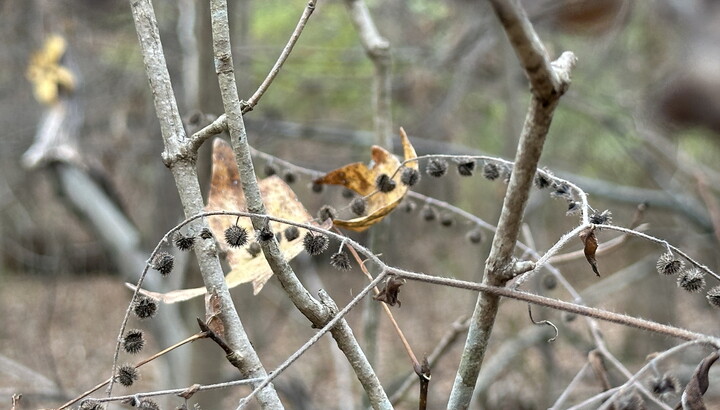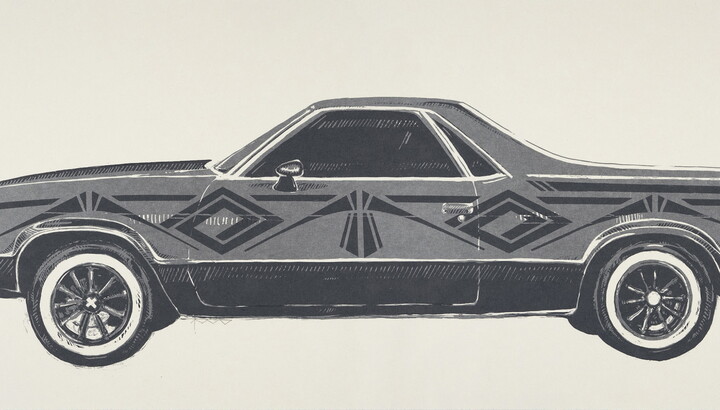The Carter Blog
Carter ARTicles
Looking at the walls
Jun 21, 2023
Most visitors to the Carter are here to see the art on the walls. But have you ever noticed what’s in the walls? The Carter façade and many of the interior walls, including in the Atrium, are built with Cordova shellstone. Like the name indicates, the stone is chock-full of fossil impressions of shelled creatures. We were curious about the shellstone and some of the creatures that made the impressions, so we spoke to Dr. Arthur Busbey, paleontologist and chair of the geology department at TCU.
What is shellstone?
“Shellstone” is not a technical geological term; it’s more of a marketing term applied to rocks that have shell in them. The geological term for limestone rocks that are made up of shell fragments is “coquina.” In coquinas, the shells are usually not in place—they’ve been tumbled around on a beach or during a storm so what is left are some of the more robust shells and a lot of fragments.
This particular limestone from Texas is “Whitestone lentil,” although it’s sometimes called Cordova shellstone. In geology, a “lentil” is a unit that is somewhat lens-shaped—thick in the middle and thin at the edges. The Whitestone lentil is part of the Walnut Formation, which covers the central part of Texas. The Walnut Formation indicates the first evidence of sea levels rising during the early Cretaceous Period (145 to 65 million years ago), eventually creating a wide seaway that connected the Gulf of Mexico with the Arctic Sea. This sea began to recede about 80 to 100 million years ago.
How old is it?
The Whitestone lentil is about 105 million years old—it was already there long before the big extinction event that caused the end of the age of dinosaurs 65 million years ago.
Is the Whitestone lentil found anywhere else?
The extent of Whitestone lentil is not very big. It starts around Austin and goes south for about 50 miles or so. It used to be very broadly mined in the 1930s through the 50s and is not as available as it once was. It was used in a lot of buildings in Texas around the centennial but was also used around the country. It can even be found in some of the Smithsonian buildings in Washington, D.C. It’s such an unusual, pretty, and durable stone that a lot of places used it as building facing.
If you see shellstone on a building, it came from Texas. There are no other limestones in the world that look like that. It’s unique and is found nowhere else.
What sort of creatures made the impressions in it?
If you look at the Whitestone, most of the fossils are gone. What you are seeing are molds—the external molds of the shells. But if you look closely, you can sometimes see internal molds—when the mud and sand filled the inside of the shell. But with most of these, the shell is lost completely.
When you are looking at the surface of the stone, you are also seeing all kinds of angles of the shells that were often cut when the stone was mined. This results in unusual views of the molds in the stone. Most likely a storm came or rough waves and mixed up all the shells and so things became jumbled in different orientations. There are shell fragments, usually as shards or arches of white, in the stone.
The most common impression is Trigonia, a type of extinct saltwater clam.
You also see Turritella, a type of sea snail that still exists today.
And there’s Pericardium, a type of clam.
This is a Trigonia, but it’s cut so that you can see where the bottom shell and the top shell met, and you can see the internal mold of what the space inside the clam looked like.
Today, corals are responsible for building reefs. But during the Cretaceous Period, certain types of clams were the major reef-builders. These were known as Rudists, and there is no mollusk alive today that is remotely similar to them. These Rudists were cone-shaped, sort of like a ram’s horn, with a flat lid on the top, and they attached themselves to the sea floor or to other Rudists to build a reef. The insides of their shells had all kinds of unique chambers and passageways. In the photo, we can see some of the original material, but you can also see weird openings and holes that were in the living animal. We don’t know if they were filled with tissue or gas or something else. This particular one looks like a caprinid rudist. They went extinct slightly before the dinosaurs, likely because sea levels began to drop and they became exposed.
The next time you visit the Carter, take a moment to step back from the art and look at the walls!










